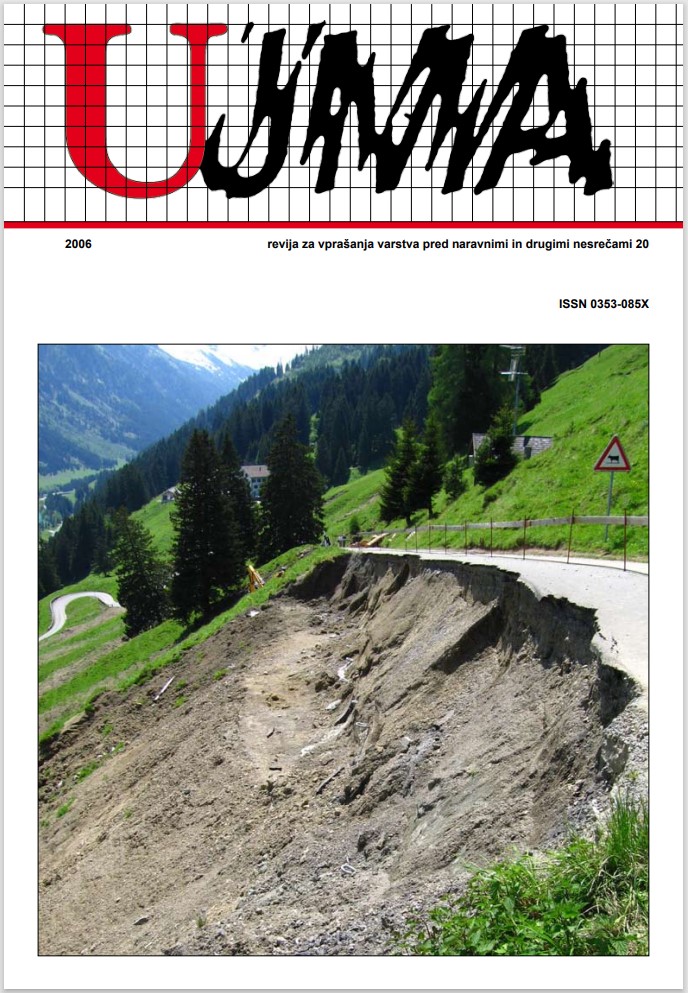TEORIJA KRIZNEGA KOMUNICIRANJA
Povzetek
Avtor v članku opozarja na pomen kriznega komuniciranja kot ene ključnih prvin procesa upravljanja in vodenja v sodobnih zapletenih krizah. Opozorilo temelji na empiričnih izsledkih raziskovalcev kriz v preteklih letih v Sloveniji in drugih evropskih državah. Avtor krizno komuniciranje umesti v krizno upravljanje in vodenje ter nakaže njegovo povezanost in soodvisnost z drugimi prvinami tega procesa. Sledi teoretična opredelitev pojma kriznega komuniciranja in prepoznavanje okoliščin, ki ga spremljajo, pri čemer izpostavi proces globalizacije, razširjeno in poglobljeno množično komuniciranje, razslojevanje sodobnih družb ter pojemanje avtoritete državne oblasti. Poseben poudarek je namenjen vlogi množičnih občil pri oblikovanju zaznav, povezanih s krizo, in zagotavljanju informacij za učinkovito krizno upravljanje in vodenje. Avtor ponudi nekaj teoretičnih in empiričnih nastavkov za oblikovanje učinkovite strategije in taktike komuniciranja v krizi, pri čemer predlaga odprtost, proaktivnost in verodostojnost oblasti ob komuniciranju z različnimi javnostmi.
Literatura
Amendola, A. and De Marchi, B.,1996. Communication in Chemical Emergencies. Journal of Contingencies and Crisis Management . Vol. 4, No. 1, str. 45–50.
Arpan, L. M. and Pompper, D., 2003. Stormy weather: testing ‘stealing thunder’ as a crisis communication strategy to improve communication flow between organizations and journalists. Public Relations Review. Vol. 29, No. 3, str. 291–308
Bacot, A. H., McCabe, A. S. and Fitzgerald, M. R., 1998. Articulating Environmental Policy Decisions to the Public . Journal of Contingencies and Crisis Management . Vol. 6, No. 3, str. 129-136.
Bernhardsdottir, A. E. and Svedin, L., 2004. Small State Crisis Management: The Icelandic Way. Stockholm: CRISMART.
Bernstein, A. B., 1987. The Emergency Public Relation Manual (3rd edition). New Jersey: Pace Inc.
Boin, A. and Lagadec, P., 2000. Preparing for the Future: Critical Challenges for the Future. Journal of Contingencies and Crisis Management . Vol. 8, No. 4, str. 185–191.
Boin, A., t’Hart, P., 2001. Public Leadership in Times of Crisis: Mission Impossible? Delovni referat na Leiden University.
Brändström, A., Malešič, M. (eds.), 2004. Crisis Management in Slovenia: Comparative Perspectives. Stockholm: CRISMART.
Coombs, T. W., 1995. Choosing the right words: The development of guidelines for the selection of the ‘appropriate’ crisis-response strategies. Management Communication Quarterly, Vol. 4., No. 8 str. 447-476.
Coombs, T. W., 1999. Ongoing Crisis Communication: Planning, Managing and Responding. Thousand Oaks: Sage Publications.
Coombs, T. W., 2001. Teaching the Crisis Management/Communication Course. Thousands Oaks: Sage Publications.
Fearn-Banks, K., 2002. Crisis Communications, Mahwah: LEA.
Fearn-Banks, K., 2001. Crisis Communication: A Review of Some Best Practices. V: Heath, R. L., and Vasquez, G. M. (eds.), 2001. Handbook of Public Relations. Thousands Oaks: Sage Publications.
Gutteling, J. M. & Wiegman, O. W., 1996.Exploring Risk Communication, Dordrecht: Kluwer Academic Publishers.
Hansen, D., 2003. The Crisis Management of the Murder of Olof Palme. Stockholm: CRISMART.
Heath, R. L., 2004. Crisis Preparation: Planning for the Inevitable. V: Millar, D. P. and Heath, R. L. (eds.)., 2004. Responding to Crisis: a Rhetorical Approach to Crisis Communication. Mahwah: Lawrence Earlbaum Associates.
Heath, R. L. and Millar, D. P., 2004. A Rhetorical Approach to Crisis Communication: Management, Communication Processes, and Strategic Responses. V: Millar, D. P. and Heath, R. L. (eds.)., 2004. Responding to Crisis: a Rhetorical Approach to Crisis Communication. Mahwah: Lawrence Earlbaum Associates.
Johansson, I. and Skoglung, P. (eds.)., 1996. Crisis Management at the National Level. Stockholm: OCB.
Lerbinger, O., 1997. The Crisis Manager: Facing Risk and Responsibility. Mahwah: Lawrence Earlbaum Associates.
Malešič, M. (ur.), 2004. Krizno upravljanje in vodenje v Sloveniji. Izzivi in priložnosti. Ljubljana: Fakulteta za družbene vede.
Mortensen, M. S., 1997. Public Relations in Crisis and Disaster. A Brief Introduction for Practitioners. Oslo: Atlantic Press.
Newlove, L.; Stern, E. and Svedin, L., 2000. Auckland unplugged. Stockholm: Swedish Agency for Civil Emergency Planning.
Novak, B., 2000. Krizno komuniciranje in upravljanje nevarnosti: priročnik za krizne odnose z javnostmi v praksi. Ljubljana: Gospodarski vestnik.
Porfiriev, B. and Svedin, L. (eds.), 2002. Crisis Management in Russia. Overcoming Institutional Rigidity and Resource Constraints. Stockholm: CRISMART.
Powers, T., Jones, A. and la Varle, B., 1999. Media Interaction with the Public in Emergency Situation: Four Case Studies. Washington: Library of Congress.
Quarantelli, E. L., 1996. The Future is not the Past Repeated: Projecting Disasters in the 21st Century from Current Trends. Journal of Contingencies and Crisis Management. Vol. 4, No. 4, str. 228–240.
Rosenthal, U., Boin, A. R. and Comfort, L. K., 2001. Managing Crises: Threats Dilemmas, Opportunities. Springfield: Charles C Thomas Publisher Ltd.
Stern, E. and Nohrstedt, D. (eds.), 2001. Crisis Management in Estonia. Case Studies and Comparative Perspectives. Stockholm: CRISMART.
Woodyard, T. M., 1998. Crisis Communication: A Commanders Guide to Effective Crisis Communication. Alabama: USAF.
Prenosi
Objavljeno
Številka
Rubrike
Licenca

To delo je licencirano pod Creative Commons Priznanje avtorstva-Nekomercialno-Brez predelav 4.0 mednarodno licenco.
Članki so na voljo javnosti pod licenco Creative Commons Priznanje avtorstva-Nekomercialno-Brez predelav 4.0 Mednarodna (CC BY-NC-ND 4.0).


